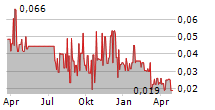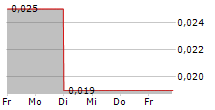VANCOUVER, BC, July 29, 2024 /PRNewswire/ -- BioVaxys Technology Corp. (CSE: BIOV) (FRA: 5LB) (OTCQB: BVAXF) ("BioVaxys" or the "Company"), a clinical-stage biopharmaceutical company developing a portfolio of immune-educating therapies based on its novel DPX platform, is pleased to announce that it has executed a binding Letter of Intent ("Agreement") with AP Visionaries, Inc. of Ontario ("APVI") to jointly develop a proprietary DPX formulation to address the urgent need for a therapy to treat or alleviate the potentially life-threatening risk of certain food allergies, namely those triggered by exposure to peanut/tree nuts or eggs.
APVI is founded by Asha Parekh, CEO of Frontline Medical Technologies, Inc., an Ontario -based medical technologies company, and Adam Power, MD, a vascular surgeon at London Health Sciences Centre, one of Canada's largest acute care teaching hospitals, and Associate Professor, Division of Vascular Surgery, The Schulich School of Medicine & Dentistry at Western University in Ontario.
BioVaxys and APVI are conducting the study in collaboration with The Schroeder Allergy and Immunology Research Institute ("SAIRI") at McMaster University in Ontario, a new institute that consolidates clinicians, scientists, and data specialists in a "one-stop shop" to research the causes of life-threatening allergies and develop new treatments.
Under the terms of the Agreement, BioVaxys will provide funding for the study to APVI, which has a collaboration in place with SAIRI to evaluate in animal models the robustness of DPX protection and evaluate whether DPX transforms the underlying immunopathology of food allergy. BioVaxys will retain all intellectual property rights to any resulting product. APVI will receive a royalty from BioVaxys on any gross sales from a resulting product, in addition to a milestone payment at first regulatory approval.
The allergic reaction provoked by peanuts is an Immunoglobulin E ("IgE")-mediated type I hypersensitivity reaction. Following exposure, peanut-specific IgE antibodies bind to high-affinity receptors on mast cells and basophils, triggering the release of histamine and other mediator substances from mast cells. In addition to other effects, histamine induces vasodilation of arterioles and constriction of bronchioles in the lungs. Symptoms can include angioedema, facial swelling, rhinitis, vomiting, diarrhea, acute abdominal pain, exacerbation of atopic eczema, asthma, anaphylaxis and cardiac arrest. Since peanut allergy reaction requires allergen crosslinking of IgE molecules on the surface of granulocytes, it is BioVaxys and AVPI's belief that the DPX + peanut antigen formulation should be incapable of mounting an anaphylactic response. To test this, one facet of the collaboration with SAIRI will have allergic mice challenged with DPX + antigen formulation, and both clinical and immunological outcome measures will be compared to whole allergen challenge.
Kenneth Kovan, President & Chief Operating Officer of BioVaxys stated "Our ability to tackle this unmet medical need is directly attributable to the immune educating capability and highly flexible antigen loading capacity of our DPX platform. With the DPX platform already the backbone of multiple BioVaxys clinical programs in oncology and infectious disease, we see a staggering opportunity for continued expansion into other novel DPX-formulations with polynucleotides, peptides, proteins, virus-like articles, and small molecules."
Peanut / tree nut allergy is recognized as one of the most severe food allergies due to its prevalence, persistency, and potential severity of allergic reaction (Peanut allergy". Clin. Exp. Allergy. 25 (6): 493-502). The global peanut allergy treatment market size is expected to reach USD 1.01 billion by 2030, according to a new report by Grand View Research, Inc. The market is expected to grow at a CAGR of 11.82% from 2024 to 2030 (Grandview Research, December 2023). Peanut allergy accounts for the majority of severe food-related allergic reactions. It tends to present early in life, and affected individuals generally do not outgrow it. In highly sensitized people, even just trace exposure can induce an anaphylactic reaction which can be life threatening. Peanut allergies affect an estimated 1.2% of the overall US population and about 2.5% of the pediatric population. They are the most common food allergy in children, affecting about 25% of those with a food allergy, and are a leading cause of allergy-related death in children (Am J Manag Care 2018;24:-S0). Avoiding peanut allergens entirely is nearly impossible, given the nearly ubiquitous presence of peanut-related molecules in many foods, whether deliberately or through contamination during processing. Thus, accidental reactions are quite common, with US studies finding rates as high as 37% over 5 years in 1 cohort and 75% over 14 years in another cohort (Sicherer SH, Burks AW, Sampson HA. Clinical features of acute allergic reactions to peanut and tree nuts in children. Pediatrics. 1998;102(1):e6).
The health, economic, and personal cost of food allergies, which includes peanut allergies, is staggering. A 2012 survey of the parents of 1643 children with a food allergy (28.7% to peanuts) estimated the economic cost of any food allergy in US children at $24.8 billion annually, or $4184 per child, with $4.3 billion in direct medical costs. Hospitalizations accounted for $1.9 billion, followed by outpatient visits to allergists ($819 million), emergency department (ED) visits ($764 million), and pediatrician visits ($543 million). Further, although nearly all the children (88.9%) in this group had health insurance, parents still encountered $5.5 billion in out-of-pocket costs from co-payments and deductibles, special diets their children needed, and childcare costs related to the allergy. Annual opportunity costs due to lower work productivity, which affected 9.1% of caregivers, were $14 billion, or $2399 per child. Overall, 4.9% of caregivers reported quitting a job because of their child's condition, 2.5% had to change jobs, and 1.9% lost their jobs (Gupta R, Holdford D, Bilaver L, Dyer A, Holl JL, Meltzer D. The economic impact of childhood food allergy in the United States. JAMA Pediatr. 2013;167(11):1026-1031).
There have been substantial advances in the treatment of peanut allergy, but cures have remained elusive and, therefore, is typically a lifelong disease. Avoidance and carrying an epinephrine autoinjector in case of accidental ingestion is unfortunately still the standard of care for most food-allergic individuals. Therapeutic advances include OIT, or oral immunotherapy, which involves ingesting small doses of peanut flour until the peanut allergic individual reaches a maintenance dose- typically 3,000mg or 9 peanuts. A significant drawback with OIT is that during the desensitization there are numerous allergic reactions(about 25%) and some involve need epinephrine. More recently, a monoclonal antibody was approved for adult and pediatric patients with IgE-mediated food allergy, which is by subcutaneous injection every 2 or 4 weeks. In addition to the need for frequent dosing, this monoclonal antibody vaccine package insert has a 'black box' warning for "anaphylaxis presenting as bronchospasm, hypotension, syncope, urticaria, and/or angioedema of the throat or tongue, has been reported to occur after administration."
James Passin, CEO of BioVaxys, stated "Competing approved allergy desensitization treatments require weekly treatments, have risk of anaphylaxis, and take years to compete - compliance with this therapy is very difficult for parents. Recently approved monoclonal antibody treatment carries a cost of US$ 2,900 and US$ 5,000 per month which could place treatment out of reach for sone patients. We look forward to completing preclinical studies with our development partners, and anticipate an emerging profile for a single dose, long duration, product consistent with other DPX formulations."
About BioVaxys Technology Corp.
BioVaxys Technology Corp. (www.biovaxys.com), registered in British Columbia, Canada, is a clinical-stage biopharmaceutical company dedicated to improving patient lives with novel immunotherapies based on its DPX immune-educating technology platform and its HapTenix© "neoantigen" tumor cell construct platform, for treating cancers, infectious disease, antigen desensitization, and other immunological diseases. Through a differentiated mechanism of action, the DPX platform delivers instruction to the immune system to generate a specific, robust, and persistent immune response. The Company's clinical stage pipeline includes maveropepimut-S (MVP-S), based on the DPX platform, and is in Phase II clinical development for advanced Relapsed-Refractory Diffuse Large B Cell Lymphoma (DLBCL) and platinum resistant Ovarian Cancer. MVP-S delivers antigenic peptides from survivin, a well-recognized cancer antigen commonly overexpressed in advanced cancers, and also delivers an innate immune activator and a universal CD4 T cell helper peptide. MVP-S has been well tolerated and has demonstrated defined clinical benefit in multiple cancer indications as well as the activation of a targeted and sustained, survivin-specific anti-tumor immune response. BioVaxys is also developing DPX+SurMAGE, a dual-targeted immunotherapy combining antigenic peptides for both the survivin and MAGE-A9 cancer proteins to elicit immune responses to these two distinct cancer antigens simultaneously, DPX-RSV for Respiratory Syncytial Virus, and BVX-0918, a personalized immunotherapeutic vaccine using it proprietary HapTenix© "neoantigen" tumor cell construct platform for refractive late-stage ovarian cancer. BioVaxys common shares are listed on the CSE under the stock symbol "BIOV" and trade on the Frankfurt Bourse (FRA: 5LB) and in the US (OTCQB: BVAXF). For more information, visit www.biovaxys.com and connect with us on X and LinkedIn.
ON BEHALF OF THE BOARD
Signed " James Passin "
James Passin, Chief Executive Officer
Phone: +1 646 452 7054
Cautionary Statements Regarding Forward Looking Information
This press release includes certain "forward-looking information" and "forward-looking statements" (collectively "forward-looking statements") within the meaning of applicable Canadian and United States securities legislation including the United States Private Securities Litigation Reform Act of 1995. All statements, other than statements of historical fact, included herein, without limitation, statements relating the future operating or financial performance of the Company, are forward looking statements. Forward-looking statements are frequently, but not always, identified by words such as "expects", "anticipates", "believes", "intends", "estimates", "potential", "possible", and similar expressions, or statements that events, conditions, or results "will", "may", "could", or "should" occur or be achieved.. There can be no assurance that such statements will prove to be accurate, and actual results and future events could differ materially from those expressed or implied in such forward-looking statements.
These forward-looking statements reflect the beliefs, opinions and projections on the date the statements are made and are based upon a number of assumptions and estimates, primarily the assumption that BioVaxys will be successful in developing and testing vaccines, that, while considered reasonable by the Company, are inherently subject to significant business, economic, competitive, political and social uncertainties and contingencies including, primarily but without limitation, the risk that BioVaxys' vaccines will not prove to be effective and/ or will not receive the required regulatory approvals. With regards to BioVaxys' business, there are a number of risks that could affect the development of its biotechnology products, including, without limitation, the need for additional capital to fund clinical trials, its lack of operating history, uncertainty about whether its products will complete the long, complex and expensive clinical trial and regulatory approval process for approval of new drugs necessary for marketing approval, uncertainty about whether its autologous cell vaccine immunotherapy can be developed to produce safe and effective products and, if so, whether its vaccine products will be commercially accepted and profitable, the expenses, delays and uncertainties and complications typically encountered by development stage biopharmaceutical businesses, financial and development obligations under license arrangements in order to protect its rights to its products and technologies, obtaining and protecting new intellectual property rights and avoiding infringement to third parties and their dependence on manufacturing by third parties.
The Company does not assume any obligation to update the forward-looking statements of beliefs, opinions, projections, or other factors, should they change, except as required by law.
Logo: https://mma.prnewswire.com/media/2415135/4832936/BioVaxys_Technology_Corp_Logo.jpg
SOURCE BioVaxys Technology Corp.



